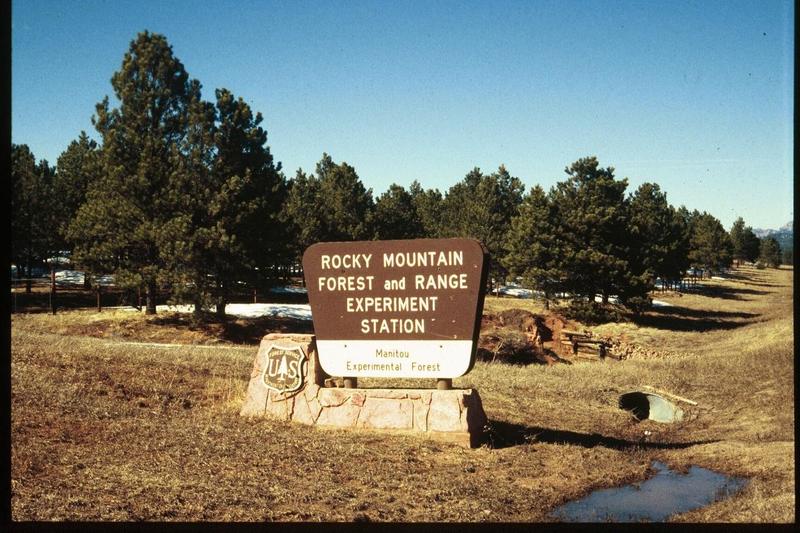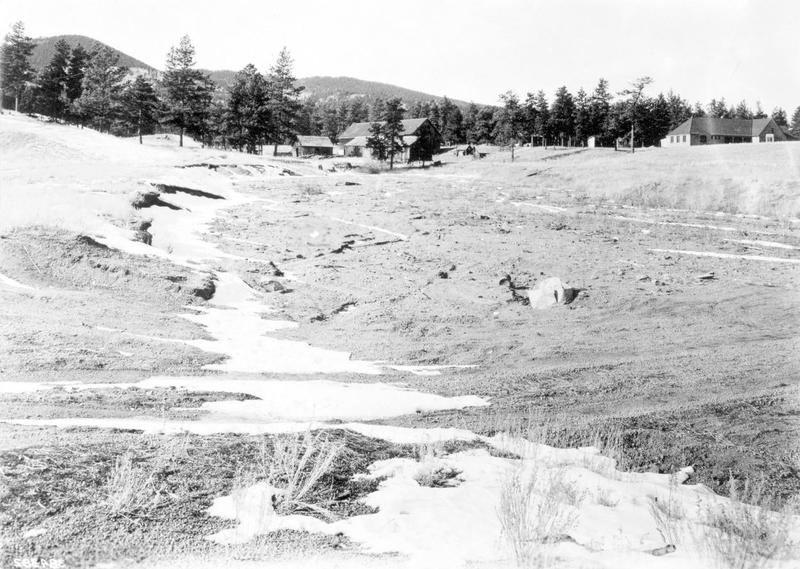Manitou Experimental Forest

Expanding from forest, range, and watershed studies, the Manitou Experimental Forest in Colorado continues its research in meteorology, ecology, and biology, spreading the importance of renewable resources and forest lands to the public.
Located northwest of Colorado Springs in Manitou, Colorado, the Forest Service established the Manitou Experimental Forest (MEF) in 1936 to study land use and forest management of the ponderosa pines in the Colorado Front Range. Spanning from northern New Mexico to southern Wyoming, the Front Range includes a unique diversity of vegetation including not just ponderosa pines but also Douglas firs, aspens, willows, shrubs, brushes, and native grasses. The Forest’s research station, the Rocky Mountain Research Station, is one of five of the Forest Service’s regional stations in the Rocky Mountains, which help monitor the health and sustainable use of our country’s valuable forests.
Fur traders originally used much of the land in the area in the early 1800s, but as the availability of furs declined in the later part of the century, mining and logging became prevalent along with farming and raising of livestock. Consequentially, the culmination of grazing and logging resulted in the near devastation of the forest by 1900, and erosion caused by poor farming techniques left the soil nearly depleted by the mid-1930s. Thus, MEF began forest, range, and watershed research to find ways to restore the land’s natural resources, while also allowing for long-term productivity. In the early years, it focused on how to use the region’s watershed to revegetate the area and to minimize flooding and sedimentation deterioration caused by storms, which included studying the area’s precipitation, pollution, streamflow, and runoff. From the late 1940s to the late 1950s, the MEF invested in pasture studies that addressed the quality of cattle diets to allow maximum livestock production, without causing erosion or depleting the watershed and native grasses.
The natural and artificial regeneration of ponderosa pine became one of its long-term studies in 1980. Throughout the 1980s, foresters worked in cooperation with Colorado State University to evaluate performance and patterns of growth and survival of ponderosa pines with seeds collected from seventy-five different zones in Colorado. They recorded measurements of height, diameter, and when growth would stop or resume with the seasons. This research also included monitoring the progress of natural seedlings, methods of cutting seed-trees, how seeds germinate and spread, how far to space trees when planting, and the prevalence of the invasive plant species to discover the most effective forest management practices for ponderosa pines, while also improving water yields. Other projects during this period included evaluating habitat requirements for the region’s Flammulated Owl population, and monitoring the health of Manitou’s lakes, streams, and domestic water supply by studying its fish diversity and levels of pollution, bacteria, and algae.
In 1998, the National Park Service added the MEF's experimental station and six of its buildings to the National Register of Historic Places. Currently, its research focuses on studies in meteorology, ecology, and biology. It also often partners with various universities and museums in Colorado in order to continue research and expand public awareness on the importance of renewable resources and forest lands.
Images




